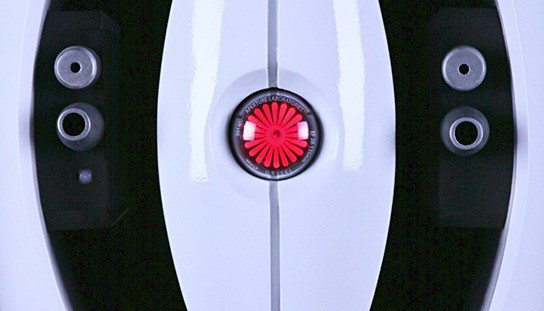

This is not Yvo’s first creation involving Portal and 3D printing either. And then there are entire blogs, like, to talk about and comment on it
#Portal turret instructions how to
That is where you can find Yvo’s Portal Turret, with instructions on how to build it yourself. In fact creativity has been spreading so much that there are entire websites, like, that have thousands of pages on such projects. With the advent of 3D printing the idea of individuals, which includes many students, creating successful products is becoming commonplace, but back then it was nothing short of incredible. One of the best aspects of Portal is that it was created by a student who had the opportunity to show it to video game publishing giant Valve and then saw it turn into a (relative) commercial success, amid rave reviews. It is this turret that Yvo has replicated. All the while, the player is facing GLaDOS, an artificial intelligence, and has to avoid fire from a turret programmed to target you automatically. In it the player uses a “portal gun” to open holes in a wall, floor or ceiling to go in and come out of some other wall, floor or ceiling somewhere else. The latest is a maniacally detailed moving turret with a targeting laser and even a camera for colour-based object-tracking.įor those who do not know it, Portal is a puzzle game, originally released in 2007 and then followed by a sequel a few years later. That is why Yvo de Haas, a 22 year old engineering graduate, used Portal as an inspiration for some of his most impressive 3D printing projects. There is no better game (IMHO) than Portal to prove it. And, while many video game companies seem to be blind to the vast potential of doing just that, video game fans are not. Only do this if you were capable of doing this yourself anyway but can do it quicker with my files.I have always been an advocate of using 3D printing to bring video game characters and items out of the screen and into the real world. I also cannot guarantee that with all the files you will get a complete turret. The turret takes ages to build (I have over 6 months clocked in this so far) and requires skills in mechanics, 3D printing, electronics and programming (both embedded and software) to get working. The source files, given without any guarantee that they will be helpful. A camera in the head can see wherever the turret can shoot, and speakers in the base allow the turret to speak. Ultimately the pi makes the decisions, though the Arduino is the one that does all of the moving and shooting. Controls: The turret is controlled using an Arduino Mega for the movement, and a Raspberry pi 3+ for the talking and watching.Each gun holds around 18 darts and can shoot 2 darts per seconds. The theoretical speed of each dart is over 100km/h, though in reality it is probably a bit lower. The flywheels are made of quadcopter outrunner motors, and spin at 25000 rpm. 4 Nerf guns: The turret contains 4 fully functional nerf guns that use flywheels to launch the darts.All movements use either hobby servo’s or DC motors with potmeters for feedback. It can move around 20 degrees in all directions, both with the guns and the laser.




 0 kommentar(er)
0 kommentar(er)
